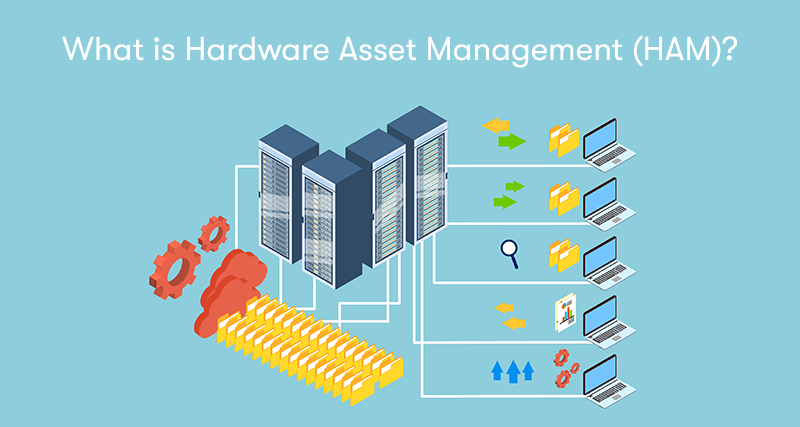What is Hardware Asset Management (HAM)?
Welcome to our exploration of Hardware Asset Management (HAM), a critical yet often overlooked component in the realm of IT management. In today's rapidly evolving technological landscape, the efficient management of physical IT assets has become more critical than ever. HAM encompasses the strategic approach to managing an organisation's life cycle of hardware assets.
From procurement to disposal, HAM ensures these tangible resources are acquired, utilised, maintained, and retired most cost-effectively and efficiently. This intricate process contributes to significant cost savings and risk reduction and aligns closely with a company's broader IT strategy. Join us as we delve deeper into the nuances of HAM and its indispensable role in optimising an organisation's IT infrastructure.
What is Hardware Asset Management (HAM)?
Hardware Asset Management refers to systematically managing the physical components of computers and computer networks, from acquisition through disposal. This process includes tracking and managing hardware devices, ensuring efficient use, maintaining inventories, and deciding when to upgrade or dispose of equipment. Key components of HAM include:
Asset Tracking
Keeping a detailed record of each hardware asset, including its specifications, location, and user. This helps manage resources efficiently and aids in the quick resolution of issues.
Lifecycle Management
Managing each phase of a hardware asset's lifecycle, from procurement and deployment to maintenance, upgrading, and eventual disposal. This ensures that each piece of hardware is used effectively throughout its lifespan.
Maintenance and Upgrades
Regular maintenance and timely upgrades are crucial for the optimal performance of hardware assets. HAM helps in planning and implementing these processes.
Compliance and Security
Ensuring that hardware assets comply with relevant regulations and standards. This includes managing licenses and providing security measures to protect data.
Cost Management
Effective HAM helps reduce unnecessary expenses by optimising the use of existing resources, negotiating better purchase terms, and making informed decisions about repairs and replacements.
Disposal and Recycling
Properly dispose of or recycle hardware that is no longer needed or has reached the end of its lifecycle in compliance with environmental regulations and data security standards.
HAM is essential in organisations of all sizes to ensure that hardware resources are efficiently used, secure, and cost-effective. It is often integrated with other IT management practices like software asset management (SAM) for a comprehensive approach to IT asset management.
Why is Hardware Asset Management Crucial for Your Business?

Hardware Asset Management is essential for businesses to save costs, enhance efficiency, improve security, ensure compliance, and manage risks effectively. It is a crucial component of overall IT management and business strategy. Let's have a look in more detail:
Cost Savings
Efficient HAM helps businesses avoid unnecessary purchases by using existing assets best. It also helps negotiate better deals with vendors and can reduce maintenance costs through proactive hardware management.
Optimised Resource Utilisation
Businesses can ensure these resources are distributed and utilised effectively by tracking and managing hardware assets. This optimisation prevents situations where some assets are overused while others are underutilised.
Risk Mitigation
Properly managing hardware helps mitigate risks associated with asset failure, compliance violations, and security breaches. HAM ensures that all hardware is maintained appropriately and that obsolete or vulnerable hardware is upgraded or replaced.
Improved Planning and Budgeting
HAM provides valuable data for future planning and budgeting. Understanding current asset utilisation and lifecycle stages helps make more informed decisions regarding future hardware investments.
Enhanced Security
Keeping track of hardware assets helps ensure that each device is updated with the latest security patches and complies with security policies. This reduces the risk of data breaches and cyber threats.
Regulatory Compliance
Many industries have specific regulations regarding data security and equipment. HAM helps ensure that all hardware complies with these regulatory requirements, thus avoiding potential legal issues and fines.
Lifecycle Management
Managing the lifecycle of hardware assets from procurement to disposal ensures that each asset is used to its maximum potential and is disposed of responsibly and securely.
Increased Productivity
Well-managed hardware assets are less likely to fail, leading to fewer disruptions in business operations and higher overall productivity.
Environmental Responsibility
Effective HAM includes environmentally responsible disposal and recycling of hardware, vital for businesses looking to reduce their environmental impact.
Data Management
Proper disposal and recycling of hardware also involve ensuring that all sensitive data is securely erased, which is crucial for protecting company and customer information.
What Are The Benefits and Challenges of HAM in IT?
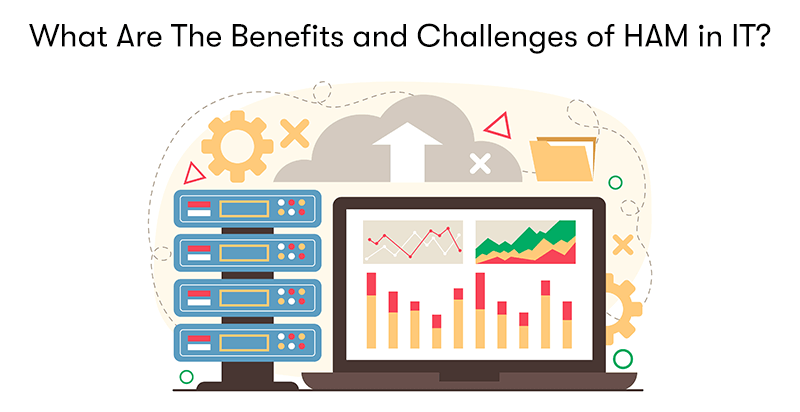
Benefits of Hardware Asset Management in IT
Cost Efficiency: HAM helps reduce costs by optimising the use of existing assets, avoiding unnecessary purchases, and negotiating better terms with suppliers.
Lifecycle Management: It enables effective tracking and management of hardware assets throughout their lifecycle, from acquisition to disposal, ensuring maximum utilisation and value.
Risk Reduction: Properly managing hardware assets reduces risks related to hardware failure, security breaches, and compliance issues.
Improved Planning and Forecasting: HAM provides valuable data for IT planning, helping organisations make informed decisions about future hardware needs and budget allocations.
Enhanced Security: By keeping track of all hardware assets, HAM helps ensure they are regularly updated and compliant with the latest security standards, thus reducing vulnerability to cyber threats.
Inventory Management: Facilitates accurate inventory tracking, ensuring that IT knows exactly what assets are available, where they are located, and who uses them.
Maintenance and Support: HAM helps schedule regular maintenance and timely support for hardware assets, reducing downtime and extending the life of the equipment.
Regulatory Compliance: Ensures hardware assets comply with relevant regulations and standards, helping organisations avoid legal and financial penalties.
Environmental Responsibility: Facilitates responsible disposal and recycling of hardware, contributing to environmental sustainability.
Challenges of Hardware Asset Management in IT
Complexity of IT Environments: Modern IT environments are complex and dynamic, making it challenging to keep track of every hardware asset, especially in large organisations or those with multiple locations.
Rapid Technological Changes: Technological advancements can make hardware assets obsolete, posing challenges in managing lifecycles and planning upgrades.
Data Accuracy: Maintaining accurate and up-to-date records of hardware assets can be difficult, especially if the process is not automated.
Integration with Other Systems: Integrating HAM with other IT management systems (like software asset management) can be complex but is essential for a comprehensive view of IT assets.
Cost of Implementation: Setting up a robust HAM system can be costly, especially for small and medium-sized businesses, due to the need for specialised software and potential hardware upgrades.
User Compliance: Ensuring all employees comply with HAM policies and procedures can be challenging, particularly in organisations with a decentralised or flexible working culture.
Security and Privacy Concerns: Managing the security and privacy of hardware, especially those holding sensitive data, is a constant challenge in HAM.
Disposal and Recycling: Properly disposing of or recycling hardware in compliance with environmental and data security standards can be complex and resource-intensive.
Overall, while HAM brings numerous benefits to IT, it also comes with challenges that require careful planning, efficient processes, and appropriate technologies to overcome.
SAM vs HAM - What is the Difference?
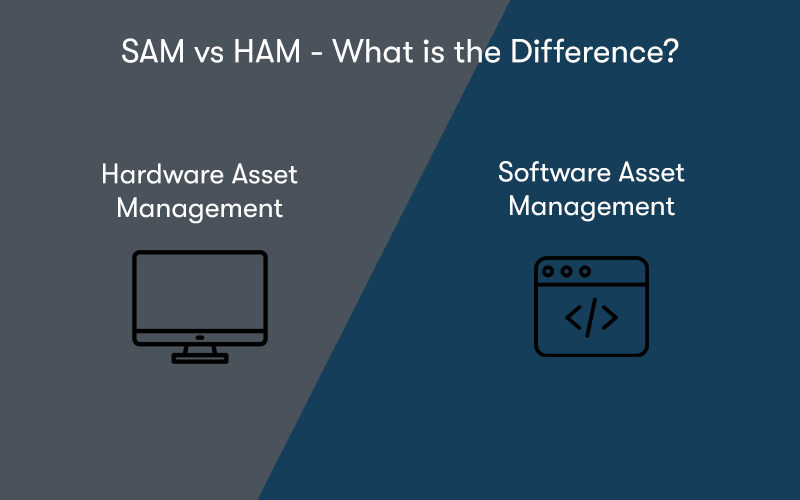
Software Asset Management and Hardware Asset Management are both critical components of IT asset management, but they focus on different types of assets and involve distinct management practices. Let's break these down and compare them:
Software Asset Management
Focus: SAM is concerned with managing and optimising the purchase, deployment, maintenance, utilisation, and disposal of software applications within an organisation.
Licensing: An essential aspect of SAM is managing software licenses to ensure compliance with legal agreements. This includes tracking the number and types of licenses (e.g., perpetual, subscription-based) and ensuring that the organisation is not under-licensed (risking legal issues) or over-licensed (wasting resources).
Updates and Upgrades: SAM involves managing updates and upgrades to software to ensure security and efficiency. This includes patch management and version control.
Cost Management: SAM helps control costs by avoiding unnecessary software purchases and subscriptions, negotiating better terms with vendors, and ensuring efficient allocation of software resources.
Compliance: Ensuring compliance with various regulatory and legal requirements related to software usage is a critical part of SAM.
Security: Managing software assets includes ensuring that all software is up to date and compliant with the organisation's security policies to protect against vulnerabilities.
Hardware Asset Management
Focus: HAM deals with the physical components of IT assets, such as computers, servers, network devices, and other hardware equipment.
Lifecycle Management: HAM involves tracking and managing the physical lifecycle of hardware assets from procurement to disposal, including maintenance, inventory management, and asset disposition.
Physical Inventory and Tracking: HAM requires maintaining an accurate physical inventory of all hardware assets, tracking their location, status, and condition.
Maintenance and Repairs: Managing the maintenance, repair, and replacement of hardware assets to ensure they are in working condition and prolong their lifespan is an essential aspect of HAM.
Cost Management: HAM helps manage hardware procurement, maintenance, and disposal costs.
Environmental Considerations: HAM includes managing the environmental impact of hardware, including energy-efficient use and proper recycling or disposal of hardware.
Key Differences
Nature of Assets: SAM deals with intangible assets (software), while HAM deals with tangible assets (hardware).
Licensing and Compliance: SAM heavily focuses on software licensing and compliance, whereas HAM is more concerned with hardware's physical lifecycle and maintenance.
Management Practices: The practices and tools used in SAM and HAM differ due to the nature of the assets they manage. SAM requires license management and software deployment tools, while HAM needs inventory tracking and physical asset management tools.
In conclusion, while both SAM and HAM aim to optimise the use of IT assets and reduce costs, they address different aspects of IT asset management and require distinct strategies and tools. Effective IT asset management typically involves integrating both SAM and HAM practices.
What is the Role of an IT Hardware Asset Manager
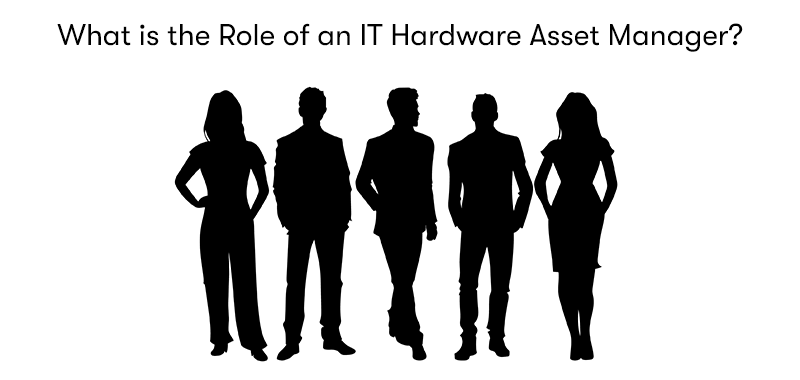
The role of an IT Hardware Asset Manager is integral to the efficient management of a company's technological resources. Their primary responsibilities include:
Asset Lifecycle Management
Overseeing the entire lifecycle of hardware assets from procurement to disposal. This involves planning for purchases, managing deployments, ensuring regular maintenance, and responsibly disposing of or recycling hardware at the end of its life.
Inventory Management
Maintaining an accurate and up-to-date inventory of all hardware assets. This includes tracking each piece of equipment's location, status, and condition.
Cost Management
Analysing and managing the costs associated with hardware assets. This includes negotiating with vendors, ensuring that investments are aligned with business needs, and reducing unnecessary expenses.
Vendor Management
Establishing and maintaining relationships with hardware vendors and suppliers. This role involves negotiating contracts, managing warranties, and ensuring vendors meet service-level agreements.
Risk Management
Identifying and mitigating hardware asset risks, such as failures, obsolescence, or security vulnerabilities. This includes developing and implementing strategies to minimise downtime and ensure business continuity.
Compliance and Security
Ensuring that all hardware assets comply with relevant industry standards, legal regulations, and organisational policies. This includes managing hardware-related security measures to protect against unauthorised access and data breaches.
Strategic Planning
Contributing to IT strategic planning by providing insights into hardware asset needs, trends, and lifecycle management. This helps in aligning IT hardware resources with the overall business strategy.
Policy Development and Enforcement
Developing and enforcing policies related to hardware asset management, including procurement policies, usage guidelines, and disposal procedures.
Reporting and Analysis
Generating reports and analyses on hardware asset utilisation, performance, and costs, providing valuable data for decision-making.
Team Coordination and Training
Coordinating with other IT teams (such as the IT support team, network administrators, and software asset managers) and training staff on adequately using and caring for hardware assets.
Overall, an IT Hardware Asset Manager is critical in ensuring that hardware resources are effectively and efficiently utilised, maintained, and managed, supporting the broader goals and strategies of the organisation's IT department and the business.
What Are Some Examples of IT Hardware Assets?
IT hardware assets encompass a wide range of physical devices and equipment used to set up and operate information technology systems within an organisation. Some common examples of IT hardware assets include:
- Computers and Laptops: Desktop PCs, laptops, notebooks, and workstations used by employees for daily work.
- Servers: Hardware that hosts enterprise applications, databases, web services and stores large amounts of data.
- Network Devices: Includes routers, switches, modems, firewalls, and wireless access points that facilitate network connectivity and security.
- Storage Devices: External hard drives, network-attached storage (NAS) devices, and backup systems for storing and backing up data.
- Mobile Devices: Smartphones, tablets, and other portable devices used for business communications and applications.
- Printers and Scanners: Devices for printing, scanning, and photocopying documents.
- Monitors and Display Units: Computer monitors, projectors, and interactive whiteboards for display purposes.
- Peripheral Devices: Includes keyboards, mice, webcams, headsets, and other peripherals that connect to computers.
- Telecommunication Equipment: Telephones, VoIP systems, and conferencing equipment used for communication within and outside the organisation.
- Point of Sale (POS) Systems: Hardware used in retail environments to process sales transactions, including POS terminals, barcode scanners, and receipt printers.
- Data Centre Equipment: Includes racks, cooling systems, and power supply units used in data centres to house and support IT infrastructure.
- Specialised Hardware: Depending on the business, this can include machinery with embedded computers, medical equipment, industrial controllers, or other specialised devices.
- Workstation Components: Individual components like graphics cards, RAM modules, and motherboards, especially in workstations that are custom-built or upgraded.
- Security Devices: Physical security devices like surveillance cameras and biometric scanners.
These hardware assets are essential for most modern organisations' daily operations and strategic initiatives. Managing them effectively through Hardware Asset Management practices is crucial to ensure their optimal use, security, and longevity.
What is The Hardware Asset Management Lifecycle?
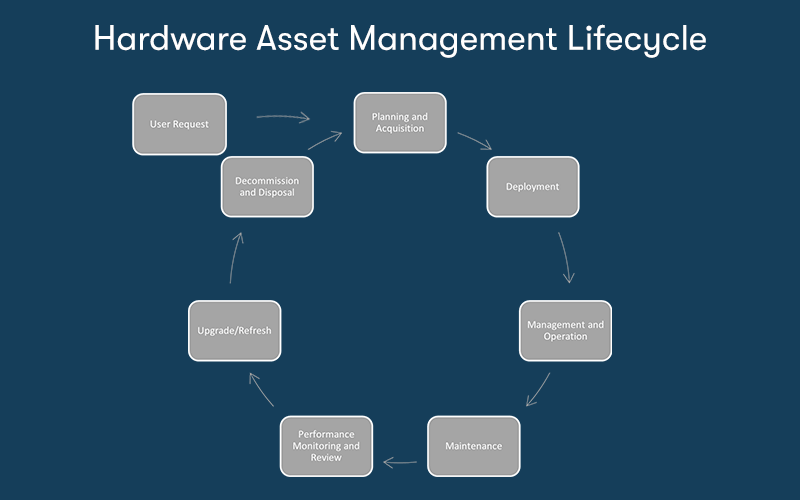
The Hardware Asset Management Lifecycle refers to the stages through which a hardware asset passes from the beginning to the end of its use within an organisation. This lifecycle is typically divided into several key phases:
1. Planning and Acquisition
Planning: Identifying the need for new hardware based on business requirements, technology advancements, or replacing outdated equipment.
Acquisition: Selecting vendors, negotiating contracts, and purchasing hardware. This phase considers cost, performance, compatibility, and future scalability factors.
2. Deployment
After acquisition, hardware is configured, tested, and installed. This phase may include setting up systems, installing necessary software, and integrating the new hardware into the existing IT infrastructure.
3. Management and Operation
Management: Daily management of hardware assets, including tracking their location, usage, and performance.
Operation: Ensuring that the hardware is functioning correctly and efficiently, which includes regular maintenance, updates, and support.
4. Maintenance
Regular maintenance is crucial to extend the life of hardware assets. This includes servicing, repairs, and updates to keep the hardware in optimal condition.
5. Performance Monitoring and Review
Continuously monitoring the performance of hardware assets to ensure they meet the required standards and business needs.
Review the hardware's effectiveness and efficiency and make decisions about upgrades or changes as needed.
6. Upgrade/Refresh
Periodically, hardware may need to be upgraded to improve performance, add new features, or maintain compatibility with other systems.
This phase involves evaluating the cost-effectiveness of upgrades versus replacement.
7. Decommission and Disposal
Eventually, hardware becomes obsolete, no longer meets business needs, or is too costly to maintain.
Decommissioning involves securely wiping data from devices, and disposal includes recycling or disposing of the hardware in an environmentally responsible way and compliance with legal and regulatory requirements.
Throughout this lifecycle, documentation and record-keeping are critical for tracking the status and history of each asset. This comprehensive approach to HAM ensures that hardware assets are efficiently utilised, risks are minimised, costs are managed, and the organisation's IT infrastructure remains robust and responsive to evolving needs.
Inventory and Control of Hardware Assets
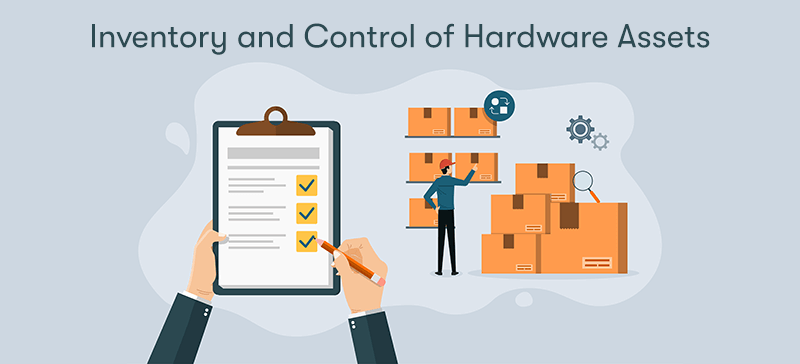
Inventory and Control of Hardware Assets are crucial components of Hardware Asset Management. They involve systematic practices to manage and monitor all hardware assets within an organisation. Key aspects include:
Inventory Management
Asset Tracking: Creating and maintaining a detailed inventory of all hardware assets. Each asset is tagged and logged with specific information such as type, model, serial number, location, and user.
Automated Tools: Utilising specialised inventory management software can automate the tracking process, making it more efficient and accurate. These tools often include features for scanning barcodes or RFID tags on hardware items.
Control Procedures
Check-in/Check-out Systems: Implementing procedures for assigning, returning, or moving assets. This ensures that each asset's whereabouts and status are always known.
Access Control: Restricting physical access to critical hardware assets to authorised personnel only, thus minimising the risk of unauthorised use or tampering.
Asset Auditing
Regular audits ensure the accuracy of the inventory records. Audits can identify misplaced, lost, or stolen items and help maintain accurate records.
Lifecycle Management
Tracking each asset through its lifecycle from procurement to disposal. This includes monitoring performance, regular maintenance, and planning upgrades or replacements.
Documentation and Reporting
Maintaining detailed records of all hardware assets and their status. Reporting tools in inventory management systems can generate insights on asset utilisation, costs, and lifecycle stages.
Policies and Compliance
Developing and enforcing policies for the use and handling of hardware assets to ensure compliance with internal standards and external regulations.
Risk Management
Assessing and managing risks related to hardware assets, such as those associated with asset failure, obsolescence, or security vulnerabilities.
Cost Management
Keeping track of the costs associated with each hardware asset, including purchase, maintenance, and operation costs. This helps in making informed decisions about repairs, upgrades, or replacements.
Integration with Other Systems
Integrating hardware asset inventory with other IT management systems, such as network monitoring tools and helpdesk systems, for a more holistic approach.
User Training and Awareness
Educating staff on the importance of asset management policies and procedures and training them on correctly using and handling hardware assets.
Effective inventory and control of hardware assets enable organisations to maximise the value and utilisation of their IT resources, ensure compliance and security, and make informed decisions about IT investments and strategies.
How Does HAM Work Within ITAM?
Hardware Asset Management is a fundamental component of IT Asset Management (ITAM), which encompasses the management of all IT assets within an organisation. HAM specifically focuses on the physical hardware components of IT infrastructure. Within the broader framework of ITAM, HAM works in conjunction with other aspects, such as Software Asset Management (SAM), to provide comprehensive asset management. Here's how HAM functions within ITAM:
Integral Part of ITAM Strategy
HAM forms a key pillar of the ITAM strategy, focusing on the lifecycle management of physical devices like computers, servers, network devices, and other hardware.
It complements SAM, which deals with software licenses and applications, ensuring a holistic approach to managing all IT assets.
Asset Lifecycle Management
HAM tracks and manages hardware assets through all stages of their lifecycle, from procurement and deployment to maintenance, upgrade, and eventual disposal.
This lifecycle approach is mirrored in SAM and other components of ITAM, providing a unified methodology for managing all IT assets.
Inventory Management
HAM involves maintaining an accurate and up-to-date inventory of hardware assets. This is crucial for effective ITAM, ensuring visibility and control over all IT resources.
Cost Management
HAM contributes to the overall cost management within ITAM by optimising hardware procurement, usage, and maintenance. It helps make informed decisions about hardware investments, repairs, or replacements.
Risk Management and Compliance
By managing hardware assets effectively, HAM reduces risks associated with hardware failure, security breaches, and compliance issues.
HAM practices ensure that hardware assets comply with various regulatory and legal requirements, a concern shared across ITAM.
Integration with SAM and Other IT Management Processes
HAM often requires integration with SAM and other IT management processes, like configuration management, for a cohesive management approach.
This integration provides a complete view of the IT environment, aiding in strategic decision-making and operational efficiency.
Supports Business Objectives
As part of ITAM, HAM supports broader business objectives by ensuring that IT hardware assets are effectively utilised and aligned with the company's goals and needs.
Resource Optimisation
In conjunction with SAM, HAM ensures the optimal use of software and hardware resources, preventing over- or under-utilisation and supporting efficient IT operations.
Environmental and Disposal Management
HAM addresses the environmental impact of hardware by managing the end-of-life disposal of assets in an environmentally responsible way. This is becoming increasingly important in ITAM due to growing environmental concerns and regulations.
In summary, within ITAM, HAM provides a focused approach to managing the physical components of IT infrastructure, complementing other ITAM areas such as SAM. Together, they ensure that all IT assets are managed effectively, supporting the organisation's overall IT strategy and business goals.
Final Notes on Hardware Asset Management (HAM)
In conclusion, Hardware Asset Management is an indispensable facet of IT Asset Management, pivotal for optimising the lifecycle and utilisation of physical IT assets. Our exploration has revealed that HAM ensures cost efficiency and risk mitigation, upholds compliance, and enhances overall IT infrastructure management. Integrating seamlessly with other components like Software Asset Management, HAM contributes significantly to a comprehensive ITAM strategy.
By adeptly managing hardware assets—from procurement to disposal—organisations can achieve heightened operational efficiency and strategic alignment with business objectives. As we navigate the complexities of modern IT environments, the role of HAM remains crucial, underscoring the importance of a well-rounded and proactive approach to managing IT resources for sustainable business success.


